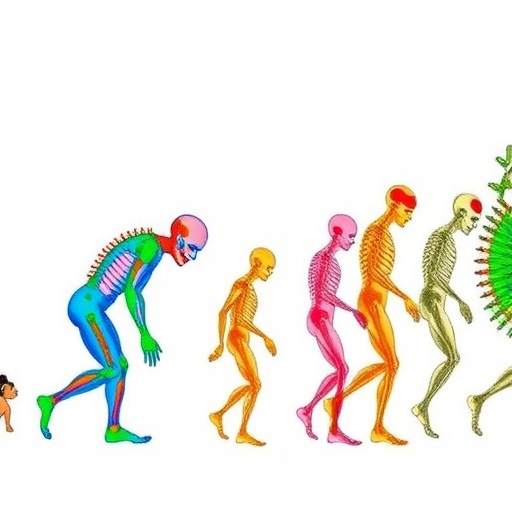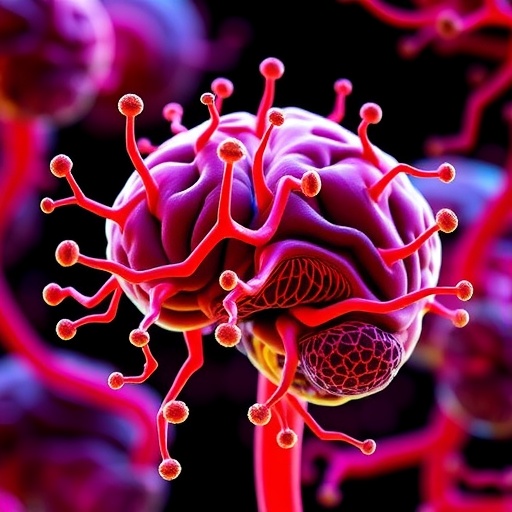Autoimmune neuropathies are a group of rare and disabling disorders, with Guillain–Barré syndrome (GBS) and chronic inflammatory demyelinating polyradiculoneuropathy (CIDP) standing out as the most notable examples. These conditions are characterized by the immune system erroneously targeting the peripheral nerves, leading to weakness, sensory disturbances, and in severe cases, paralysis. The complexities around diagnosing and treating these conditions have left both patients and healthcare providers yearning for advancements. Despite the grave nature of these disorders, therapeutic options have remained stagnant for over 30 years, with standard treatments including intravenous immunoglobulins (IVIg) and corticosteroids. This stagnation has not only hindered treatment efficacy but has also limited the quality of life for individuals afflicted by these neuropathies.
For decades, the management of autoimmune neuropathies has heavily relied on a combination of clinical assessments, patient-reported outcomes, and non-specific markers. Relying on these parameters often leads to inconsistent diagnoses and inadequate treatment regimes. A significant barrier to progress has been the intricate pathophysiology underlying these conditions, coupled with their heterogeneity, which presents a tangled web of symptoms and responses to treatment. However, recent developments may be paving the way for a new era in addressing these disorders, instilling hope for both patients and practitioners alike.
In recent years, research has illuminated previously obscure aspects of these conditions, including the identification of pathogenic autoantibodies that target cell-adhesion molecules, specifically within the node of Ranvier. These discoveries have redefined our understanding of the immunological mechanisms at play in autoimmune neuropathies, leading to the conceptualization of a new diagnostic category known as autoimmune nodopathies. This novel classification not only highlights the importance of these autoantibodies in the disease process but also underscores the need for a rigorous reevaluation of existing diagnostic criteria and therapeutic strategies.
One of the noteworthy milestones in the field lies in the refinement of diagnostic guidelines for GBS and CIDP. By honing in on the specific timing, symptomatology, and biomarker profiles associated with these disorders, health professionals can more effectively identify and classify patients, paving the way for targeted interventions. The establishment of clearer diagnostic criteria minimizes misdiagnosis and enhances the potential for appropriate management, which is especially crucial in acute cases of GBS where timely intervention can drastically alter outcomes.
Alongside revisions in diagnostic practices, the recent FDA approval of efgartigimod for the treatment of CIDP marks a significant breakthrough in therapeutic options for this condition. Efgartigimod works by reducing the levels of pathogenic IgG antibodies, thereby addressing one of the core mechanisms of the disease. Clinical trials of this drug have shown promising results, indicating not just improvements in clinical symptoms but also enhancements in overall patient quality of life. This approval symbolizes a shift towards precision medicine in the realm of autoimmune neuropathies, promoting the idea that treatments can be tailored to address the specific immunological dysfunctions at play.
Moreover, the exploration of complement inhibitors in clinical trials represents another exciting frontier in the treatment of autoimmune neuropathies. These novel agents target and inhibit components of the complement cascade that contribute to nerve damage, thus presenting a potentially transformative approach for managing CIDP, GBS, and multifocal motor neuropathy. The early results from these investigations suggest that complement inhibition may provide a dual benefit: reducing symptoms while also fostering regenerative healing processes in the nervous system.
As advancements continue to unfold, the identification of biomarkers that can optimize prognostication and monitoring in autoimmune neuropathies stands to significantly enhance patient management. Biomarkers hold the promise of informing healthcare providers on disease progression, treatment response, and relapse risk, enabling a more proactive and personalized approach to care. The ongoing research focused on elucidating these markers is poised to transform the landscape of monitoring for these disorders, moving clinical practice from a reactive to a more anticipatory model.
A multitude of research endeavors fittingly encapsulates the dynamic shifts occurring in the field of autoimmune neuropathies. From inappropriate immune responses to pathological autoantibodies and inflammatory processes, investigators are delving into the intricacies that govern these debilitating conditions. Such explorations not only aim to augment our understanding of the underlying disease mechanisms but are also anticipated to yield innovative therapeutic avenues, ultimately advancing patient outcomes.
As we forge ahead, the anticipated interplay between novel discoveries, enhanced diagnostic criteria, and promising therapeutic agents heralds a new chapter in the management of autoimmune neuropathies. The acknowledgment of these advancements brings with it an imperative responsibility for both clinicians and researchers to remain vigilant and responsive to emerging evidence, fostering a collaborative environment that prioritizes patient welfare and innovation.
The potential convergence of diverse research findings presents a fertile ground for accelerating developments in this field. Collaborative efforts, spanning multiple disciplines, and a shared commitment to pushing past traditional boundaries will be crucial as we embark on this ambitious journey towards understanding and effectively managing autoimmune neuropathies. The urgency for meaningful treatment options resounds loudly, promising a brighter future for individuals grappling with these challenging disorders.
Overall, the evolving landscape of autoimmune neuropathies epitomizes a paradigm shift characterized by hope, innovation, and commitment towards improved outcomes. As we synthesize current insights and explore forthcoming research avenues, the focus must remain steadfast on translating scientific discoveries into tangible benefits for patients, thereby asserting our resolve to tackle the challenges posed by GBS, CIDP, and their counterparts. The momentum generated through recent advancements ushers in an era of renewed optimism, poised to redefine the standard of care for autoimmune neuropathies while ensuring that the voices of patients echo in the corridors of scientific inquiry.
As we look to the horizon, it becomes increasingly apparent that the intersection of rigorous clinical research, the commitment to patient-centric care, and the rapid evolution of scientific knowledge will serve as the bedrock for future breakthroughs in autoimmune neuropathies. This collaboration will not only catalyze advancements in treatment but will also foster a community committed to addressing the unmet needs of those affected by these debilitating conditions.
Subject of Research: Autoimmune neuropathies, Guillain–Barré syndrome (GBS), chronic inflammatory demyelinating polyradiculoneuropathy (CIDP)
Article Title: The changing landscape of primary autoimmune neuropathies
Article References: Caballero-Ávila, M., Pascual-Goñi, E., Lleixà, C. et al. The changing landscape of primary autoimmune neuropathies. Nat Rev Neurol 21, 544–555 (2025). https://doi.org/10.1038/s41582-025-01133-3
Image Credits: AI Generated
DOI:
Keywords: Autoimmune neuropathies, Guillain–Barré syndrome, chronic inflammatory demyelinating polyradiculoneuropathy, efgartigimod, complement inhibitors, biomarkers, disease mechanisms.
Tags: advancements in neuropathy treatmentautoimmune neuropathieschallenges in neuropathy diagnosischronic inflammatory demyelinating polyradiculoneuropathydiagnosing autoimmune disordersGuillain-Barré syndrome treatmentimmune system and peripheral nervesimproving quality of life in autoimmune disordersmanagement strategies for neuropathiespathophysiology of autoimmune neuropathiespatient-reported outcomes in neuropathiestherapeutic options for neuropathies






